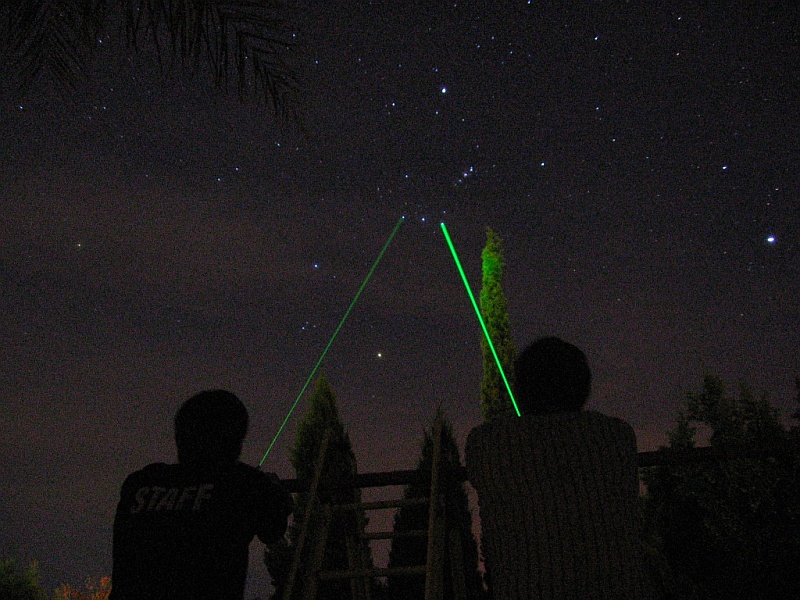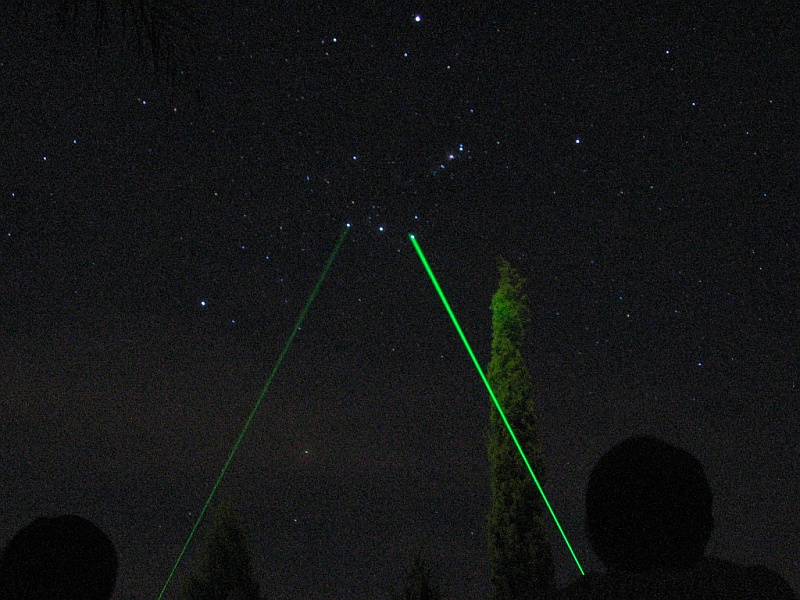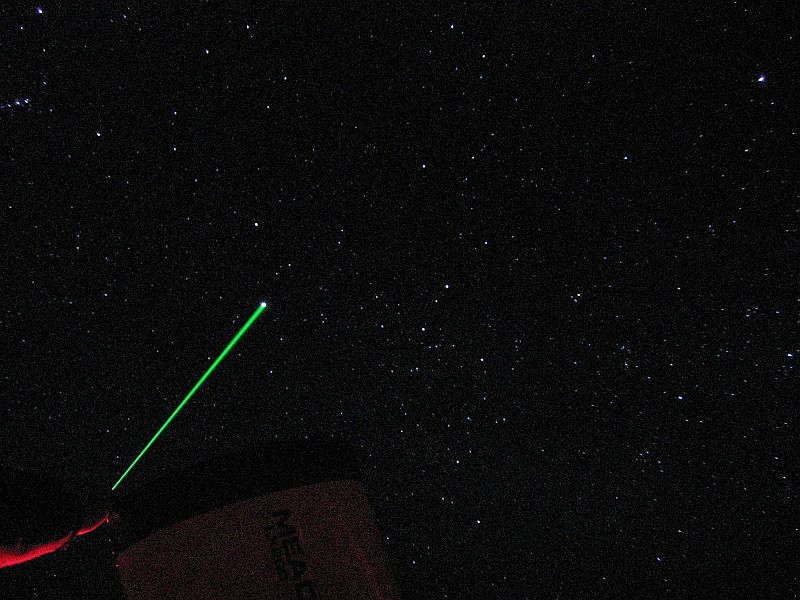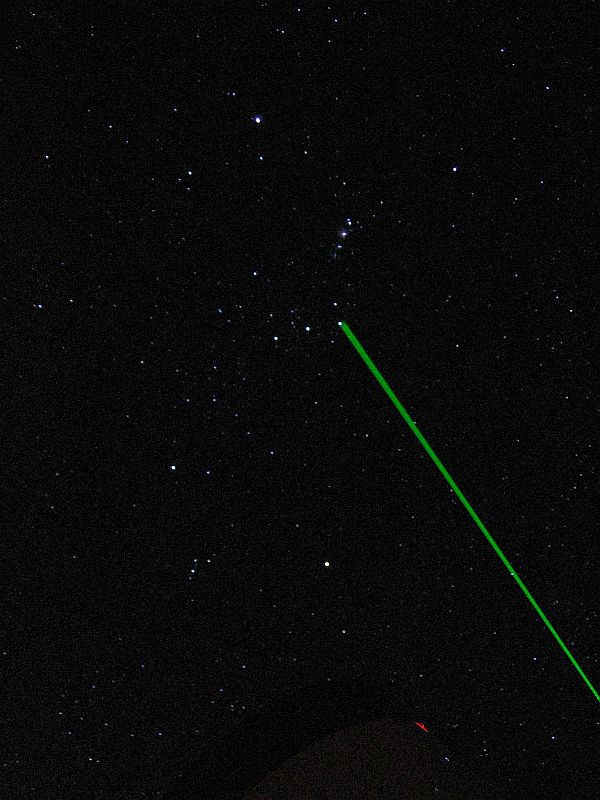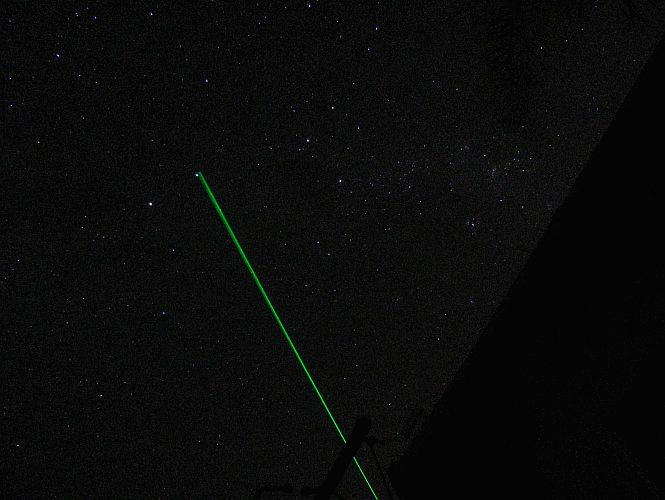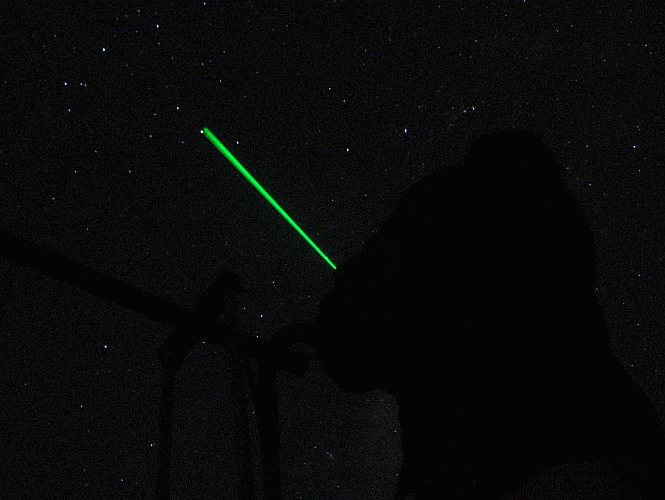| See my test report article
published in MNASSA,
June 2006. |
 |
| The day I received this welcome
gift - a 15mW Wicked Laser
- I was like a child who got a tourch for Christmas and cannot wait for
nightfall to try it out! I had to restrain myself from diving in under
a bed! Judging by its brightness when operating it in daytime, already
showed this to be a serious laser!
Since I regularly do star-parties with the public, I always wanted a powerful green laser to point out stars, planets and constellations. I once tested a <5mW version but it was a great disappointment. So my first night out with the laser was aimed at this application. My first impressions exceeded my greatest expectations! Below are three pictures with me pointing out the brightest star in the night sky, Sirius, in the constellation of Canis Major, Orion´s big hunting dog, on its side here. For those unfamiliar with the constellations or confused by their orientation in the southern sky, I included a screenshot of the free-ware program Cartes du Ciel, showing the sky from my location at the time I took these pictures. Although a first quarter Moon lit up the sky, the laser-beam was very easily visible, even at 20 metres away from the person doing the pointing, meaning that a large group of people can all comfortably follow the presentation, a common complaint with low power green lasers. An idea of the brightness of the laser beam can be seen in these pictures when comparing it to bright Sirius which is visible from even the most light-polluted cities of the world. I have since used this laser at two star-parties with great success. They don't call these lasers WICKED for nothing! And this is only the baby version! All pictures were taken with a Canon PowerShot A510 digital camera, using 15 sec. exposure at f/2.6 and ISO 400. No image processing was done to try and enhance the laser beam´s brightness. To get an idea of what it looks like by eye, stars down to about 1 magnitude more than the naked eye can see, registered on these pictures. |
 |
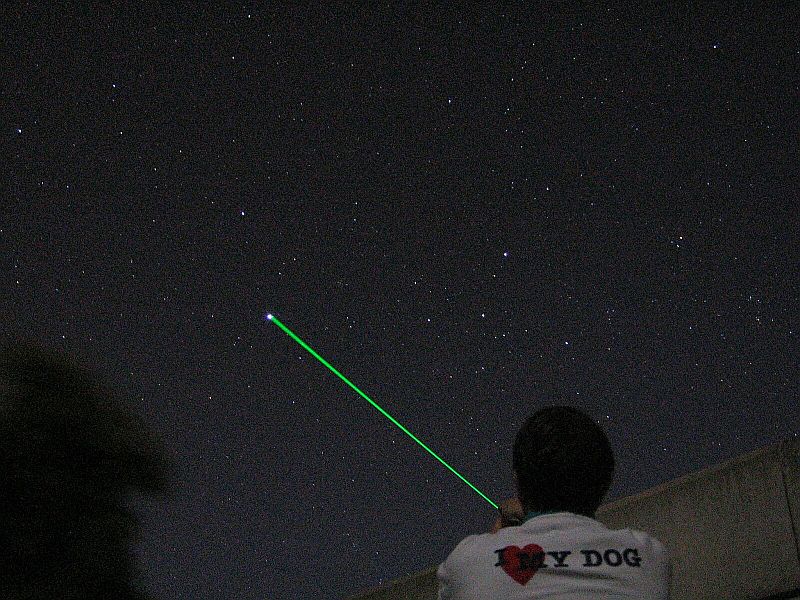 |
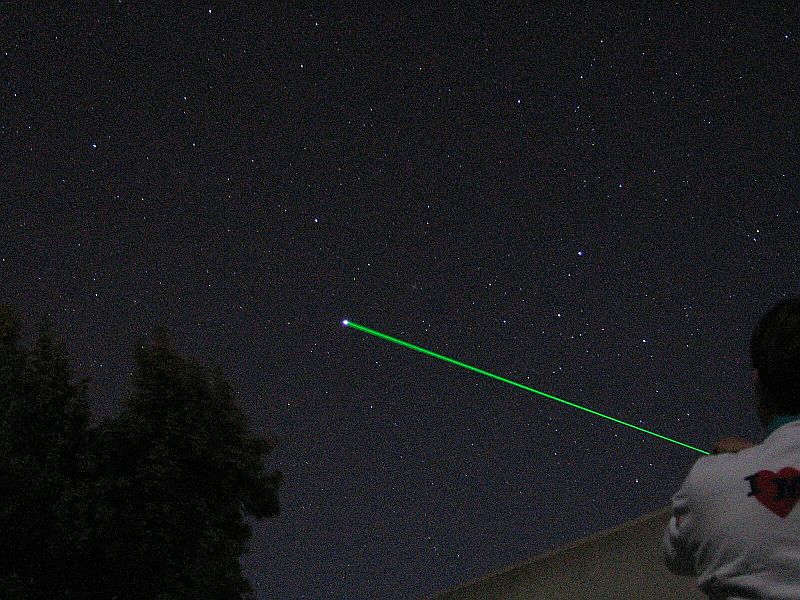 |
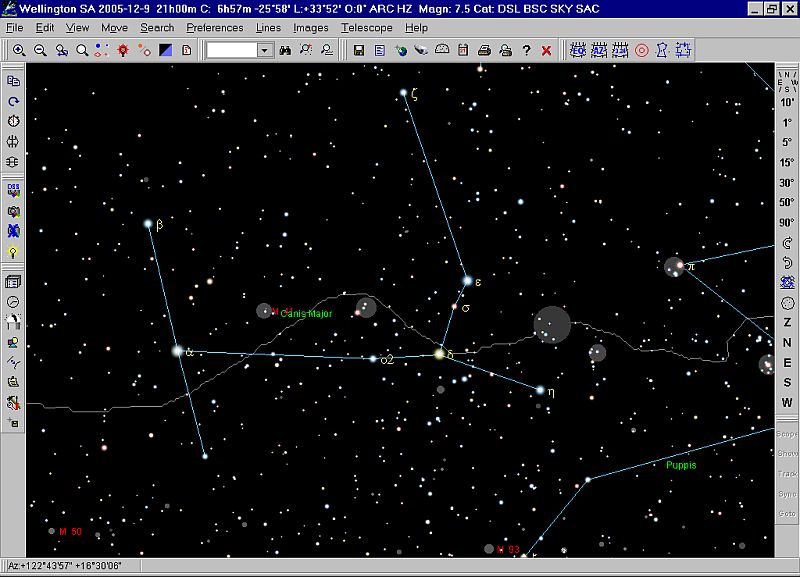 |
|
|
